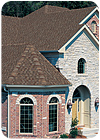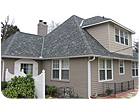
Asphalt represents a significant investment on the part of contractors and manufacturers. Beyond equipment and infrastructure, the attachment to asphalt is almost emotional because it has served its calling so well and done it with such longevity. Its versatility and dominance may be unmatched in the roofing business. From self-adhered underlayments to mineral surfaced cap sheets, asphalt can be found in just about any layer of a roofing system, and companies continue to spread the word about its benefits.
There are challenges ahead, as single-ply membranes gain market share even in the asphalt stronghold of the Sunbelt and the cost of petroleum products remains a global issue. There have been significant advances in products to address stiff competition, as well as new demands for performance and ease of installation. There may be fewer mops and torches on today’s jobsites, but the oldest and most studied waterproofing membrane continues to top many buildings through innovation and flexibility.
“If you understand the basic principles of asphalt, you’re going to have a basic idea of how it’s going to perform. You’re comfortable with that,” says Neil Robinson, creative director of marketing for TAMKO Building Products, Joplin, Mo. “It’s a very workable product. That’s what I think contractors have always liked about asphalt. It’s very versatile.”

The unique ability of asphalt to tackle commercial and residential projects, both low and steep slope, requires an expansive marketing approach where different factors weigh heavily on the consumer. For the homeowner, appearance is often the deciding factor. (Photos courtesy of TAMKO Building Products.)
Scratching the Surface
There was a time during the 1980s when the built-up roof (BUR) manufacturers saw single-ply manufacturers enter the market and eat their lunch. While the inroads made by EPDM, PVC and now TPO cannot be denied, roofing materials using asphalt are the most popular choice for commercial projects and asphalt shingles continue to dominate the residential market.According to The Freedonia Group, BUR and modified bitumen account for 33 percent of office and commercial buildings and asphalt shingles account for another 26 percent of that same segment. The market research firm sees modest growth through 2010 with constant pressure from single plies. Energy conservation is a growing concern among building owners as the reflectivity of exterior services is heavily promoted by the federal government and producers, and even mandated by some cities and states.
While the future for lighter roofing materials is certainly bright, it is only part of the equation for Russell Snyder, executive director of the Asphalt Roofing Manufacturers Association. Founded in 1915, the association is filled with roofing pioneers that capitalized on the versatility of asphalt to meet demands like reflectivity, or resistance to fungus and impact from hail.
“I think our members have done a good job of taking modified bitumen, for instance, with a mineral cap sheet and putting in reflective granules,” says Snyder. “You can’t just look at the surface reflectivity. You can get energy savings by looking at the total roofing design.”
ARMA has revamped its Web site (www.asphaltroofing.org) to make it more consumer friendly, including a calculator that allows building owners to determine potential energy savings for different roof systems. The idea is that a decent layer of insulation or the addition of a radiant barrier can make just as much of an impact as a white membrane, without the concern for contaminants reducing the effectiveness of the surface over the years. The venerable association appears to be branding asphalt the same way groups like the Metal Roofing Association have elevated the status of metal roofs. Once laden with images of rusting, corrugated sheets on an old barn, metal roofing now enjoys a high status among homeowners and even qualifies for a 10 percent federal tax credit. (For more information on tax credits, visitwww.energytaxincentives.org.)
Government incentives and mandates go a long way toward boosting the awareness of the energy-saving properties of building materials as the design community attempts to keep track of the developments both in regulations and products. Some mandates like those in California’s Title 24 apply only to commercial roofing, and energy savings isn’t even on the radar screen for many homeowners. But that doesn’t mean that consumers can’t be educated on that topic as they weigh their roofing options. The unique ability of asphalt to tackle commercial and residential projects, both low and steep slope, requires an expansive marketing approach where different factors weigh heavily on the consumer.
“On the shingle side of it, the consumer wants choice,” explains Snyder. “Some consumers are becoming more aware of the environment, but they want to know how well it looks on their house.”
He points to the fact that laminated/dimensional shingles now account for two-thirds of all asphalt shingle sales for members. “That’s just a huge market shift in 10 years,” he says.
Profiles that mimic wood shingles or slate or tile give a choice to homeowners who are increasingly paying attention to their roofs and doing research on the Internet before scheduling the first sales call. Even though a new roof is a necessity that some consumers dread, many are making the most of the situation by looking at the many available options. Other homeowners are compelled to update the look of their roofs even though their present roof is structurally sound. Algae resistance is a growing concern that’s not limited to the South, and the success of algae-resistant products is proof that the appearance factor once again tops all other variables. Impact resistance qualifies for lower insurance premiums in hail belts like parts of Texas. The proven success and long-term warranties available with laminated shingles assures homeowners that they are installing a long-term roof solution, freeing them to play with a rainbow of colors, textures and features.

Care and Repair
In competitive markets, roofing contractors are compelled to be as diverse as their products. Don Kennedy Roofing, a roofing contractor in Nashville, Tenn., does commercial and residential work, and the company has a sheet metal shop, a roofing cleaning operation, a repair and maintenance force and last year began installing seamless gutters. Kennedy is happy about his profit margins while addressing customers across the spectrum. Rather than a hassle, his repair business has generated outstanding numbers, according to Kennedy, who points out that maintenance work usually leads to exclusive bids for replacements down the road.“In return, you make a profit off the roof twice and you’ve got a very happy customer,” says Kennedy, who started his business in 1978. “That’s our focus. It’s kind of like doing surgery. You don’t want to go in there and get cut up, so they delay it as long as possible.”
Kennedy understands the mentality of the customer well enough to have built a 3,300-square-foot showroom filled with 140 different kinds of roofing materials. He points out the investment he made three years ago has more than paid for itself because despite all the fears about price resistance, the final selection of a roofing material isn’t based on numbers.
“Our business is very emotional, like the auto business,” he explains. “Customers like to see the product. We try to make it so they can come in and buy their system right here. When we get them in our showroom, it’s almost 100 percent closing.”
His marketing plan uses telephone directories, yard signs and bus benches (in the right spots). Kennedy won’t cold call, and he indicates his best advertising comes from a one-time investment in his vehicles. This savvy marketer likes to tell the story about a plumber he once knew. People would come up to him all the time to mention how they saw his trucks all over town. In reality, the plumber had only one truck, but it was sharp. Don Kennedy Roofing has over 40 clean vehicles with lettering that potential customers see on the road and at work sites in the neighborhood.
In those vehicles are neat professionals with laptops and printers to offer custom estimates right on the spot. Kennedy expects to invest close to $100,000 in a customer relationship management program specifically designed for his operations. The technology, trucks and training are all designed to complement a professional crew that’s neat, prompt and honest - as well as technically sound.
“We have awesome repair guys,” he says, adding that asphalt shingles are an easy maintenance item compared to other materials. “The fix is easy. The problem is finding the guys willing to research the problem and fix it right the first time.”
Carefully balanced incentives help motivate the workforce while ensuring satisfied customers. Some of his ideas come from visiting other roofing contractors when he’s on vacation. He gets contacts from manufacturer’s reps and has visited roofing contractors in Atlanta, St. Louis and Naples, Fla. He’s also hosted several visitors in turn. It gives him a big picture of the business and a close-up look at the small things that ensure success. “There’s always something they do that is better than you,” he says.
In the long run, keeping eight or nine shingle crews busy doesn’t require high-pressure sales but a sales team that offers solutions that are right and cost effective for the customer. Kennedy is sensitive to many in the area who are on a fixed income, and he still installs a lot of three-tab shingles.
“They try to give a customer what they need,” he says about his estimators. “You sell what’s best for the house and what’s best for the person."

Building a Great Reputation
One company that built its reputation on asphalt is TAMKO, but the company is continually adding to its offerings. Begun as a regional producer of asphalt-based products in 1944, the company added to its lineup of roofing products as it grew. Today, known as TAMKO Building Products, the company is a national manufacturer of residential and commercial roofing products, waterproofing, composite decking and railing systems, as well as cements and coatings. Asphalt remains a core business and even plays a key role the in the development of new products in its waterproofing division and different surfaces for self-adhered underlayments.The latter is a growing market for companies who can provide security for customers concerned about an extra measure of protection for their roofs. From ice dams to wind-driven rain, self-adhered asphalt membranes provide backup for roofs of all stripes. The membranes can dry in a roof for a couple of months and they are increasingly in demand in states around the country.
Another aspect of the company’s versatility is a technique developed by TAMKO to reduce waste with an innovative shingle application that uses leftover pieces to finish different courses of shingles. Reusing a few inches off alternating courses on a 5,000 square foot roof means a lot of savings in material, labor and cleanup. The company offers a short video of the process on its Web site, www.tamko.com.
“That’s something that we’ve talked about over the years,” says Robinson of TAMKO. “We’re able to save the contractor time and money.”
And that’s the bottom line for any contractor who wants to stay at the top of his game. Asphalt products offer energy savings, hail resistance, algae resistance, fire and wind ratings, and acceptance by building codes since they were first written. It’s not the same product it was 150 years ago, and asphalt is found in some of the most high-performing products available today.
“They have always been key roofing products and they’ve always done very well for us,” says Robinson. “We don’t forget how we’ve arrived. Asphalt has had a major impact on our business. It’s been able to roll with the changes.”
Report Abusive Comment